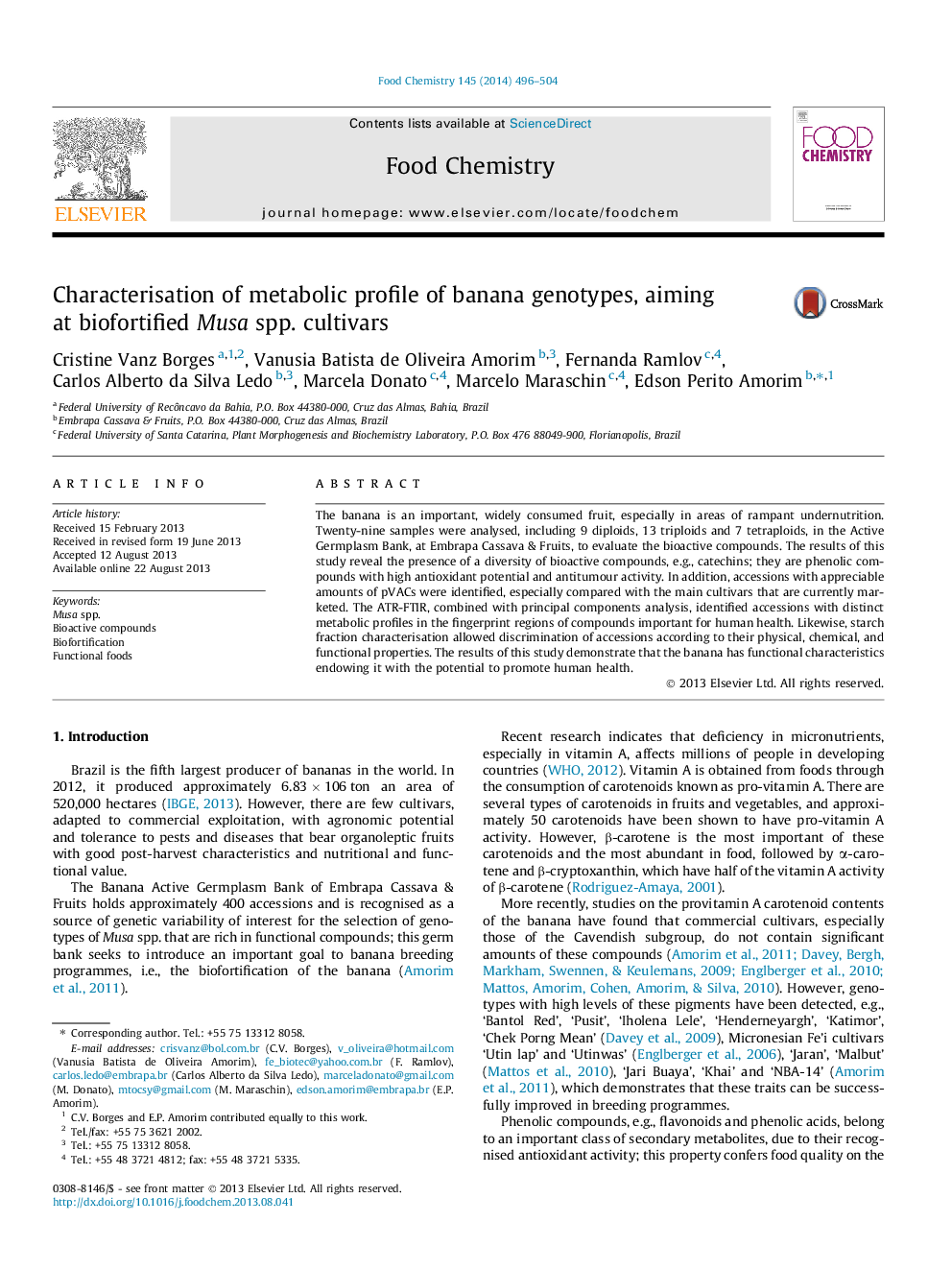| Article ID | Journal | Published Year | Pages | File Type |
|---|---|---|---|---|
| 7600793 | Food Chemistry | 2014 | 9 Pages |
Abstract
The banana is an important, widely consumed fruit, especially in areas of rampant undernutrition. Twenty-nine samples were analysed, including 9 diploids, 13 triploids and 7 tetraploids, in the Active Germplasm Bank, at Embrapa Cassava & Fruits, to evaluate the bioactive compounds. The results of this study reveal the presence of a diversity of bioactive compounds, e.g., catechins; they are phenolic compounds with high antioxidant potential and antitumour activity. In addition, accessions with appreciable amounts of pVACs were identified, especially compared with the main cultivars that are currently marketed. The ATR-FTIR, combined with principal components analysis, identified accessions with distinct metabolic profiles in the fingerprint regions of compounds important for human health. Likewise, starch fraction characterisation allowed discrimination of accessions according to their physical, chemical, and functional properties. The results of this study demonstrate that the banana has functional characteristics endowing it with the potential to promote human health.
Related Topics
Physical Sciences and Engineering
Chemistry
Analytical Chemistry
Authors
Cristine Vanz Borges, Vanusia Batista de Oliveira Amorim, Fernanda Ramlov, Carlos Alberto da Silva Ledo, Marcela Donato, Marcelo Maraschin, Edson Perito Amorim,
